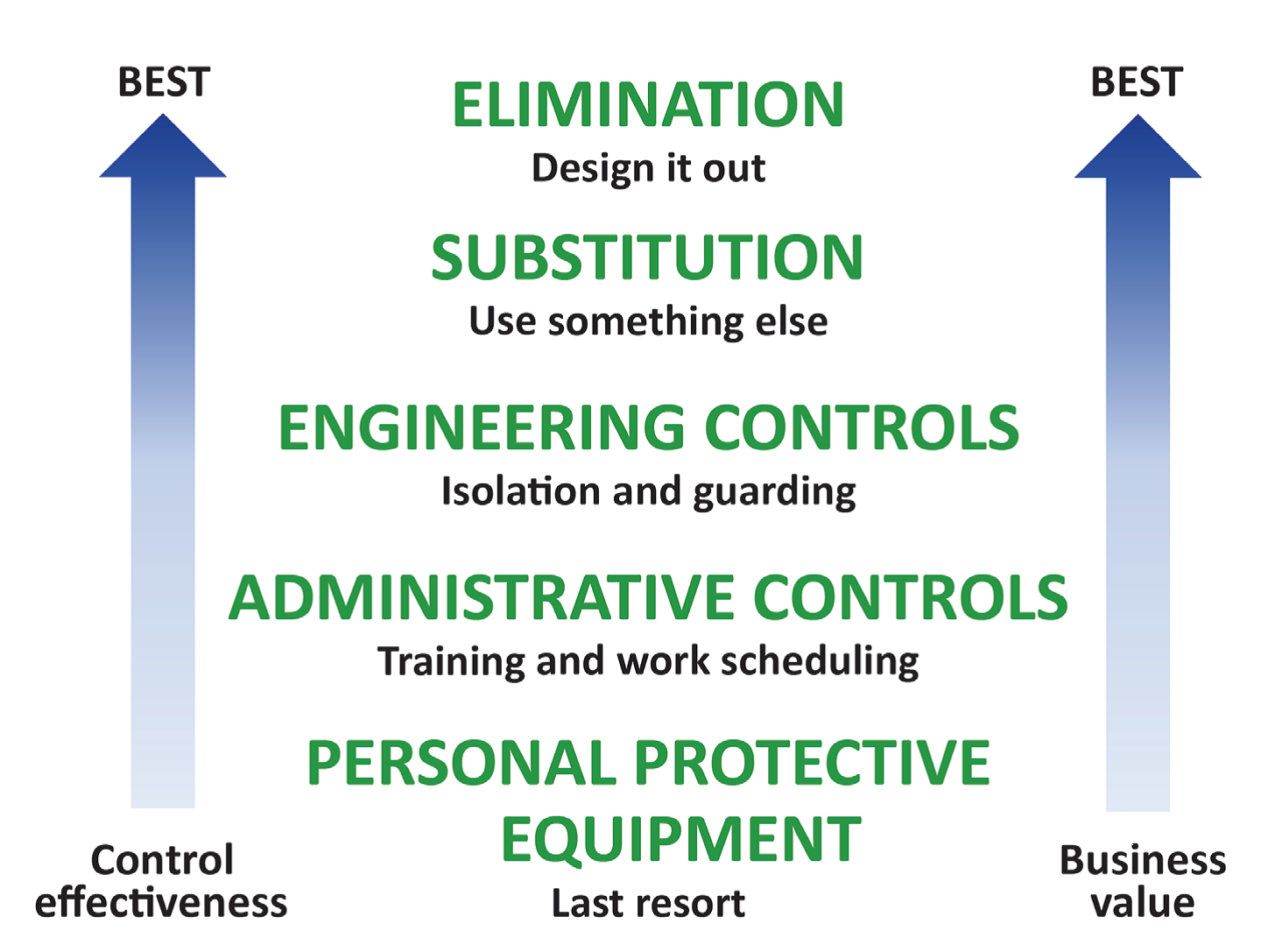Improving Worker Health and Safety by Design
 |
NIOSH broadly defines “green” jobs as those “that help to improve the environment.” These may include jobs related to renewable energy like solar and wind, jobs in recycling, jobs in the manufacturing of cleaner more sustainable products, and jobs where workers use these greener products such as in farming, health care, and service sectors.
But being greener does not necessarily include a safer, healthier work experience so NIOSH developed a program called Prevention through Design (PtD) that simply helps “design out” hazards in facilities, methods, operations, processes, tools and equipment, new technologies, and work organization. Although NIOSH associates PtD with “Green, Safe and Healthy Jobs” the program has plenty to offer a variety of businesses.
Forget expensive calls to lawyers and consultants. With Enviro.BLR.com, you get instant access, 24/7. Try it out today and get the 2015 EHS Salary Guide, absolutely free. Download Now.
PtD was launched in 2007 by NIOSH in partnership with a range of stakeholders in health and safety, engineering, construction, health care, insurance, and manufacturing, as well as other agencies and academia. In its 2014 progress report, NIOSH detailed how the initiative is succeeding toward its ultimate objective which is “to achieve a cultural change so that designing out occupational hazards is the norm.” Here’s how it works:
When designing, redesigning, and/or retrofitting any of the above aspects, PtD focuses on “hazard elimination and substitution followed by risk minimization through the application of engineering controls and warning systems …” The process utilizes the “traditional hierarchy of controls, placing hazard control higher in the hierarchy, which not only lowers risk to worker health and safety, but also can provide “significant business costs savings …” realized by such things as lower worker compensation and healthcare costs for injured and ill workers. In addition, the report says there are other benefits to PtD, including getting products to market faster, operational efficiency improvements, better employee morale, lower worker absenteeism and turnover, higher product quality, and increased market share.
Key to the program’s success are awareness and participation, and according to the report, PtD is well on its way to meeting its goal. In a survey of worker safety and health policies and management practices “that address worker safety and health issues in the design or redesign of equipment, processes, or tools” at 200 U.S.-based multinational firms, results showed that 80% of companies were aware of the PtD program and 77% included PtD principles in their operations. In addition, 40% of those responding to the survey indicated that they also required their suppliers and contractors to have internal PtD programs.
Everything You Need for Environmental Compliance
Enviro.BLR.com puts everything you need at your fingertips, including practical RCRA, CAA, CWA, hazardous waste regulatory analysis and activity, news, and compliance tools. Try it at no cost or risk and get a FREE report.
Another key indicator of the program’s success is its integration in education. To date, the report notes that PtD principles are included in 10 safety management and engineering textbooks and “four self-contained education modules targeting students majoring in Architectural, Civil, or Construction Engineering,” are now offered. In addition, ongoing industry PtD research is yielding a wealth of peer-reviewed articles and reports. For example, NIOSH cites a Construction Industry Institute report that provides more than 400 design suggestions at no cost to members of the Institute reflecting “all types of design disciplines, jobsite hazards, and construction components and systems.” The suggestions were also incorporated in a computer program that alerts users of safety hazards in a project and suggests ways to eliminate or minimize them in the design phase.
Also of importance is the addition of PtD concepts in more than 25 consensus standards, including those published by the following organizations:
- American National Standards Institute (ANSI);
- American Society of Heating, Refrigerating and Air-Conditioning Engineers (ASHRAE);
- American Society of Safety Engineers (ASSE);
- American Industrial Hygiene Association (AIHA);
- Underwriters Laboratory (UL);
- Semiconductor Equipment and Materials International (SEMI); and
- International Organization for Standardization (ISO).
One of the notable standards cited is ANSI/ASSE standard Z590.3, Prevention through Design: Guidelines for Addressing Occupational Risks in Design and Redesign Processes, which includes PtD concepts within an occupational safety and health (OSH) management system, and it is applicable in any occupational setting.
